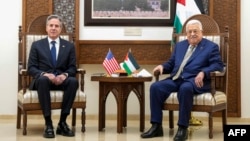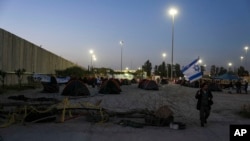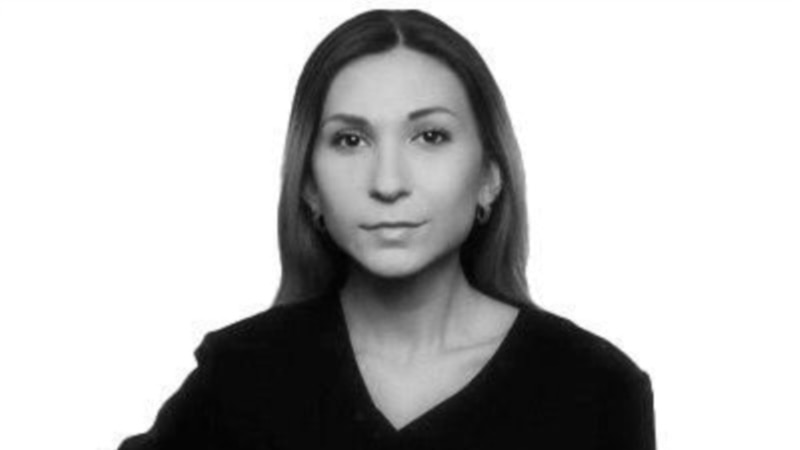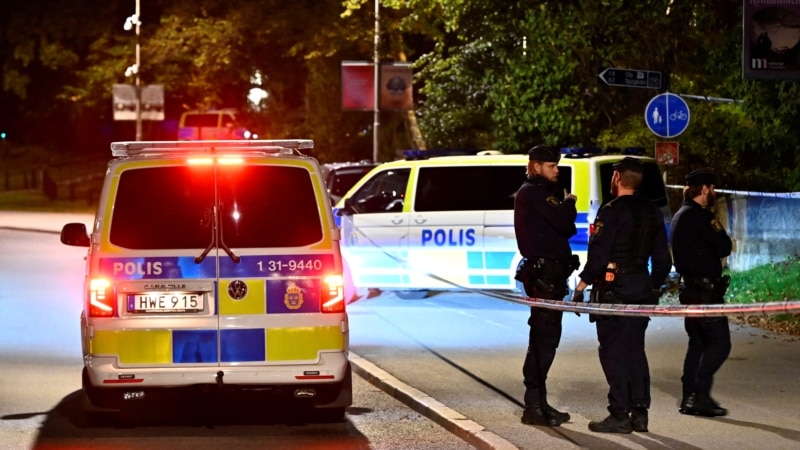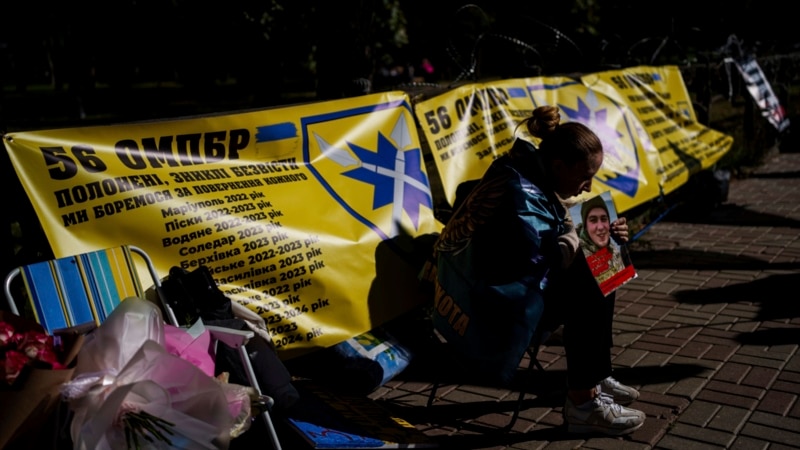Israeli Prime Minister Benjamin Netanyahu on Wednesday rejected a plan offered by Hamas to end the war in Gaza, instead vowing to push forward with its attack on the militants until it achieves “absolute victory.”
The Israeli leader ruled out an offer by Hamas for an end to four months of fighting accompanied by a staged, 4½-month release of about 100 hostages held by Hamas in exchange for hundreds of Palestinians imprisoned by Israel. But the Hamas offer also called for the militants to retain governing control of the narrow territory along the Mediterranean Sea and the right to rebuild its military capability.
“We are on the way to an absolute victory. There is no other solution,” Netanyahu said at a news conference after meeting with U.S. Secretary of State Antony Blinken. He said the Jewish state’s war effort would take months, not years.
The top U.S. diplomat, who is holding his own news conference later Wednesday, is on his fifth round of talks with Mideast leaders in a so-far fruitless effort to end the warfare that erupted with the shock October 7 attack on Israel that killed 1,200 people. Hamas health officials in Gaza say Israel’s counter-offensive has killed more than 27,500 and displaced about 2 million Gazans from their homes.
Netanyahu rejected any arrangement that would leave Hamas in full or partial control of Gaza. He also said Israel is the “only power” capable of guaranteeing security in the long term. The U.S. has called for a revitalized Palestinian Authority to govern Gaza and the Israeli-occupied West Bank, which Netanyahu has also rejected.
While some Netanyahu critics inside Israel and abroad have criticized him for having no definitive plan to govern Gaza when the war ends, he said bluntly, “The day after is the day after Hamas. All of Hamas
Ahead of his own news conference, Blinken acknowledged that “a lot of work” remains before a new cease-fire between Israel and Hamas militants could be implemented in Gaza and hostages held by Hamas set free.
Israel had appeared open to a cease-fire lasting several weeks in exchange for the release of hostages, a plan negotiated by Israel, the U.S., Qatar and Egypt.
Netanyahu has recently increased pressure on Qatar, questioning its mediation role and urging Qatar to use its influence over Hamas for the hostages’ release.
Richard Goldberg, a senior adviser at the Washington-based Foundation for Defense of Democracies, noted a shift in Israeli strategy due to Qatar’s negotiation stance, which he says aligns with Hamas’ demands, which Israel rejects.
“The Qatari position in negotiating now is the Hamas position — permanent cease-fire, removal of all Israeli forces in exchange for hostages being released. That is an unacceptable end state to the Israelis,” Goldberg said in a recent call with reporters.
Hamas laid out its three-phase plan extending over 4½ months, with all hostages released in exchange for hundreds of Palestinians imprisoned by Israel, and an end to the war, with Hamas continuing to govern Gaza and allowed to rebuild its military.
U.S. President Joe Biden said earlier this week that Hamas’ demands for a cease-fire are “a little over the top” but that negotiations will continue.
In its proposal, Hamas called for three 45-day phases, first releasing all remaining women and children, as well as older and sick men, in exchange for an unspecified number of Palestinian prisoners held by Israel.
The Hamas plan calls for Israel to withdraw from populated areas and end its aerial bombardment while also allowing far more humanitarian aid to enter Gaza and permitting Palestinians to return to their homes, including in devastated northern Gaza.
The second phase, to be negotiated during the first, would include the release of all remaining hostages, mostly soldiers, in exchange for all Palestinian detainees over the age of 50, including senior militants, to be freed by Israel.
Israel would release an additional 1,500 prisoners, 500 of whom would be specified by Hamas, and complete its withdrawal from Gaza.
In the third phase, the sides would exchange the remains of hostages and prisoners. Israel says it believes more than two dozen of the remaining 130 or so hostages in Gaza have already died or been killed.
A previous temporary cease-fire in late November lasted for a week and brought the release of more than 100 hostages from Gaza and 240 Palestinian prisoners held by Israel. The Israeli military said Tuesday that 31 of the remaining hostages are dead.
At the United Nations, U.N. spokesperson Stephane Dujarric said that within the Gaza Strip, 20 partners have provided food assistance, reaching about 1.8 million people between January 29 and last Sunday.
Additionally, the World Food Program distributed more than 190,000 food parcels in January, which is enough for about 955,000 people for 10 days. The parcels were provided to displaced individuals living in informal camps and with host communities in the Gaza Strip, Dujarric said.
Also Tuesday, Martin Griffiths, the U.N.’s emergency relief coordinator, said in a statement that as hostilities in Gaza enter a fifth month, the population of the southern city of Rafah has surged fivefold, with families crammed into shelters and forced to sleep outdoor
According to the Office for the Coordination of Humanitarian Affairs, Rafah is already accommodating half of Gaza’s population of about 2 million.
U.N. correspondent Margaret Besheer and White House bureau chief Patsy Widakuswara contributed to this report. Some information came from Agence France-Presse and Reuters.

